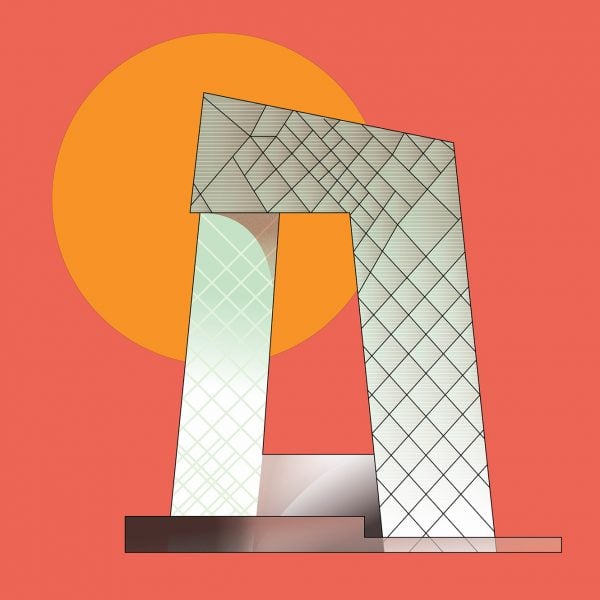Continuing our 21st-Century Architecture: 25 Years 25 Buildings series, we take a look at OMA‘s CCTV Headquarters in Beijing, an iconic symbol of China‘s construction boom.
OMA‘s skyscraper was among the first wave of high-profile buildings designed by Europe’s top architects as China announced its presence as an economic and construction powerhouse.
Nicknamed “big pants” by locals and billed as “the greatest work of architecture built in this century” by critics, the extremely distinctive skyscraper gained global attention as a symbol of Beijing.
The steel and glass building, which houses the headquarters and production facilities for state-owned China Central Television, has an unusual and experimental angular looped shape.
Although it officially opened in 2012, its structure and facades were already completed ahead of the Summer Olympics in 2008, when the world’s attention turned to the Chinese capital.
It led a generation of impressive, often unusual buildings that came to define both China’s emergence as a global power and the country’s reputation as fertile ground for international architecture studios.
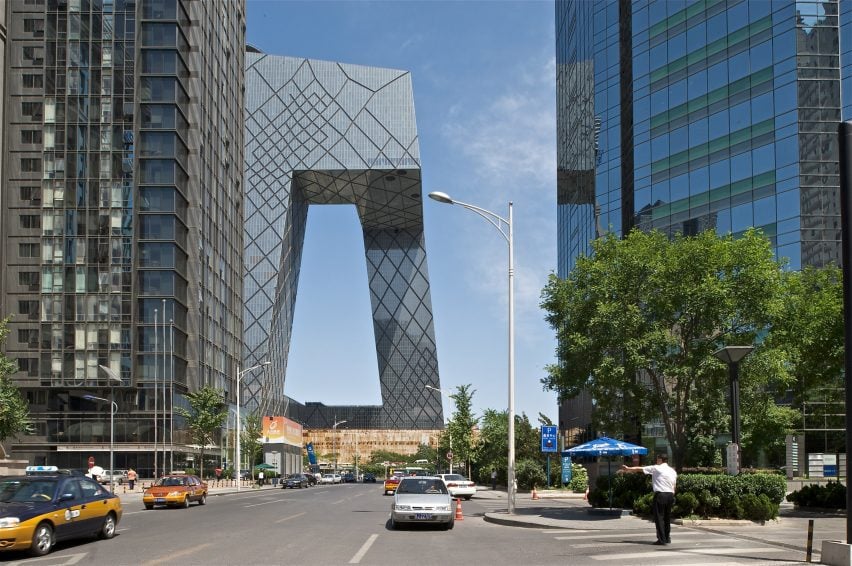
Formed of two leaning towers that are joined on the upper floors by a 75-metre cantilevered bridge, the gravity-defying building breaks away from the typical skyscraper typology.
The CCTV Headquarters was designed by OMA co-founder Rem Koolhaas and German architect Ole Scheeren, who was director of the studio’s Beijing office at the time, along with partner David Gianotten and project manager Dongmei Yao.
The skyscraper was met with criticism when its design was first revealed in 2003, with its overhanging bridge, engineered by Arup, raising concerns in the earthquake-prone city.
Others were critical of a foreign architect designing the prestigious building. Tsinghua University architecture professor Wu Liangyong, who led a research team studying the buildings of Beijing’s 2008 Summer Olympics remarked that “when foreign architects come to China acting like architectural masters, it is a direct result of the sad fact that Chinese people like to call foreigners gods,” as reported by The New Yorker.
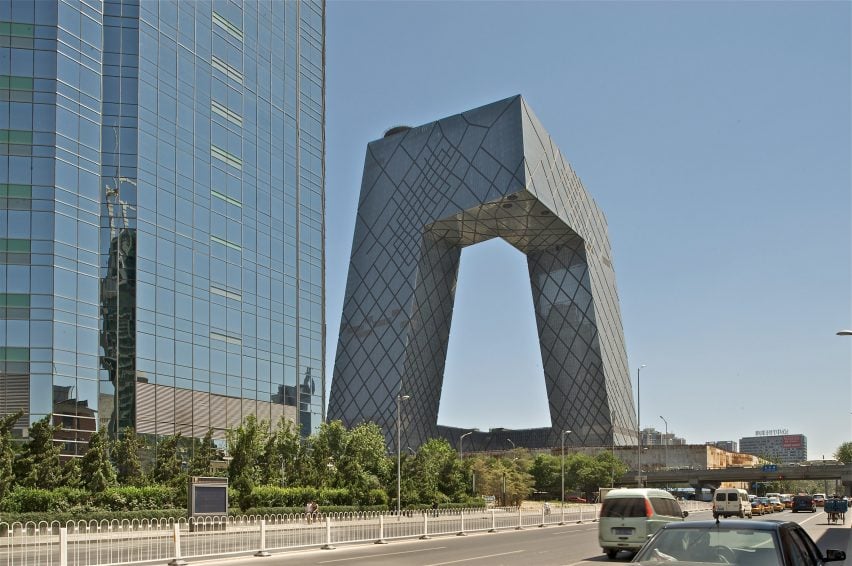
Koolhaas maintained that the building’s conjoined shape was informed by the Chinese cultural tradition of collectivism, intending to reinforce a sense of community in the building rather than separate people into two separate skyscrapers.
A 2009 fire in an adjacent building left the CCTV building needing restoration work, but when it finally opened in 2012, it did so to critical acclaim.
It is one of the most beguiling and powerful works I’ve seen in a lifetime of looking at architecture Nicolai Ouroussof in the New York Times
Architecture critic Nicolai Ouroussoff praised it in the New York Times as “the greatest work of architecture built in this century”.
“At moments monumental and combative, at others strangely elusive, almost retiring, it is one of the most beguiling and powerful works I’ve seen in a lifetime of looking at architecture,” Ouroussof said.
“Mr Koolhaas has created an eloquent architectural statement about China’s headlong race into the future and, more generally, life in the developed world at the beginning of the 21st century,” he continued. “It captures our era much as the great works of the early modernists did theirs.”
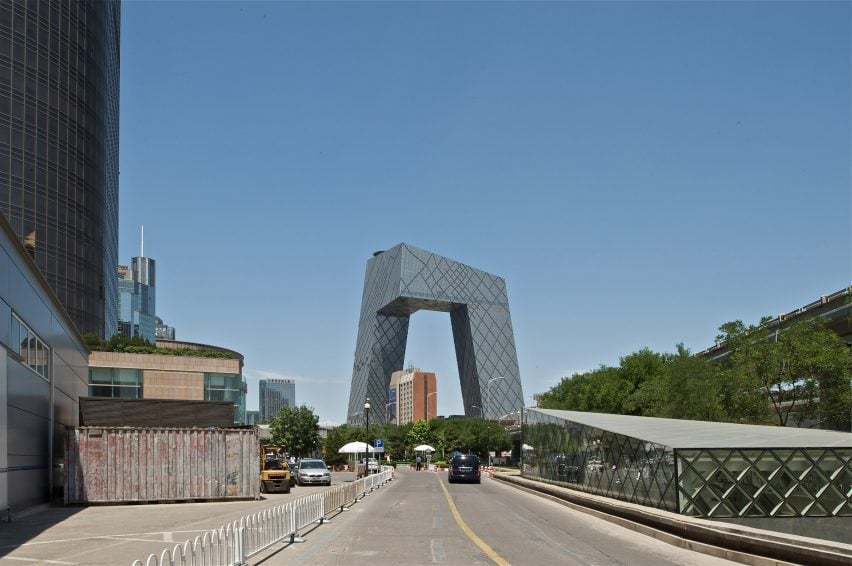
However, the skyscraper’s unusual form was not celebrated by all. In 2014, Chinese president Xi Jinping announced he wanted “no more weird architecture” in the country after the Chinese property boom led to a number of bombastic structures.
Koolhaas’s skyscraper came under fire by Jinping in a two-hour speech made at a literary symposium, along with a pair of bridges over the Yangtze and Jialing rivers in Chongqing that have been compared to female genitalia.
His complaints also followed the completion of a skyscraper shaped like a giant doughnut and Zaha Hadid’s pebble-shaped Wangjing Soho complex.
Koolhaas hit back at Jinping’s comments and defended his design.
“I don’t have the slightest difficulty in saying, or showing, or demonstrating, that CCTV is a very serious building,” Koolhaas told Dezeen at the time.
“[CCTV is] a building that introduces new ways of conceptualising, liberating and realising structure that did not exist in China before, and of which I’m sure Chinese culture and Chinese architecture will benefit,” he added. “It articulates the position and the situation of China.”
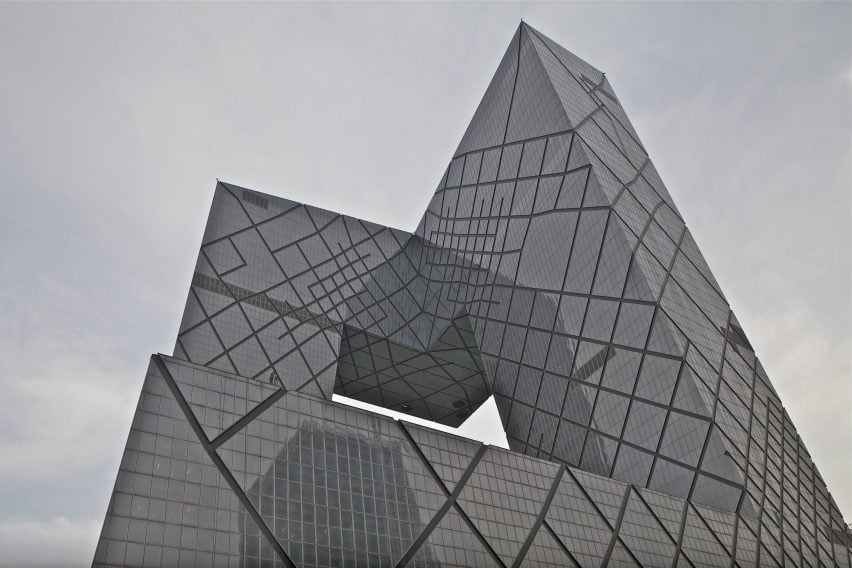
A skyscraper akin to the unusual shape of the CCTV Headquarters is unlikely to be built again in China.
In February 2016, just over a year after Jinping slated the CCTV Headquarters, China put an end to the trend of unusual architecture by issuing new planning guidance.
The country’s State Council released a document that forbade “oversized, xenocentric and weird” buildings, stating that all new buildings should be “suitable, economic, green and pleasing to the eye”.
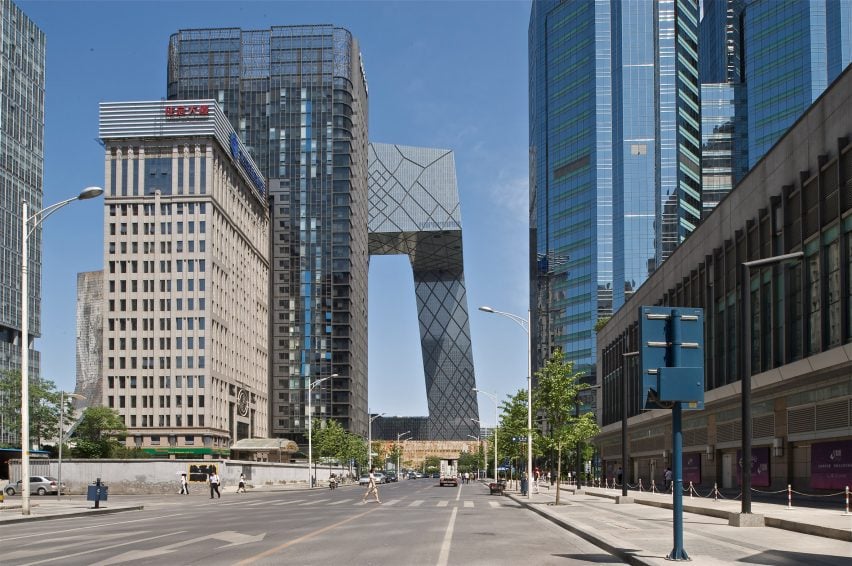
Koolhaas’s design for the CCTV Headquarters featured on the front cover of his book, Content, which was published in 2003.
In a chapter titled Kill the Skyscraper, Koolhaas outlined his discontent with skyscrapers at the time, which he argued had become cliched.
“The skyscraper has become less interesting in inverse proportion to its success,” Koolhaas wrote in the chapter. “It has not been refined, but corrupted.”
I didn’t think there was a lot of creative life left in skyscrapersRem Koolhaas
According to the architect, his design for the CCTV Headquarters sought to offer an alternative to the traditional archetype and redefine the skyscraper.
Ironically, after claiming he wanted to “kill the skyscraper”, Koolhaas’s CCTV Headquarters won the world’s best skyscraper in 2013, beating the Shard in London by Renzo Piano.
Koolhaas acknowledged this irony when accepting the award, which was given by the Council on Tall Buildings and Urban Habitat (CTBUH).
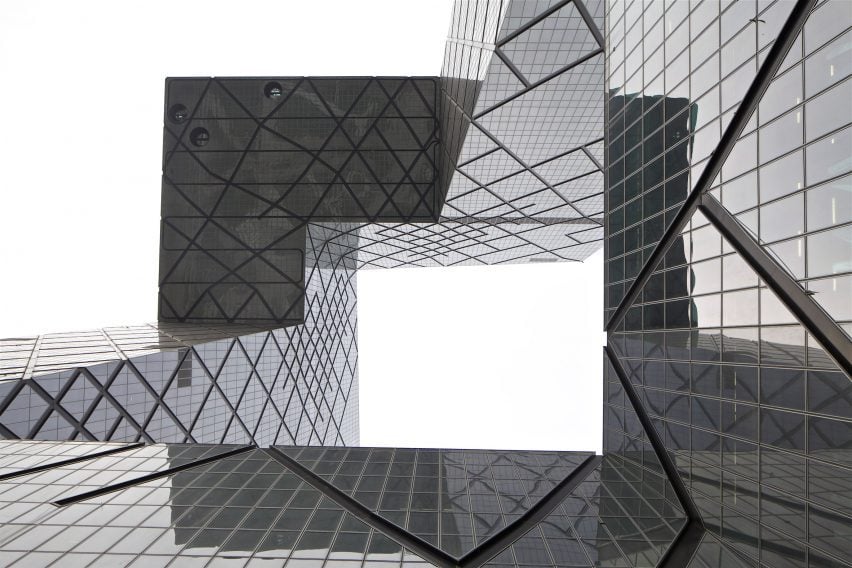
“When I published my last book, Content, in 2003, one chapter was called ‘Kill the Skyscraper’,” said Koolhaas in a presentation about the project to CTBUH. “Basically, it was an expression of disappointment at the way the skyscraper typology was used and applied.”
“I didn’t think there was a lot of creative life left in skyscrapers,” he continued. “Therefore, I tried to launch a campaign against the skyscraper in its more uninspired form.”
“The fact that I am standing on this stage now, in this position, meant that my declaration of war went completely unnoted and that my campaign was completely unsuccessful.”
Although the building inevitably became surrounded by more skyscrapers built to greater heights, the CCTV Headquarters still demands attention to this day for its impressive form and rejection of the norm.
Whether beloved or loathed, the building serves as a visual reminder of China’s construction boom and its rise to economic global dominance in the last quarter-century.
Did we get it right? Was the CCTV Headquarters by OMA the most significant building completed in 2012? Let us know in the comments. We will be running a poll once all 25 buildings are revealed to determine the most significant building of the 21st century so far.
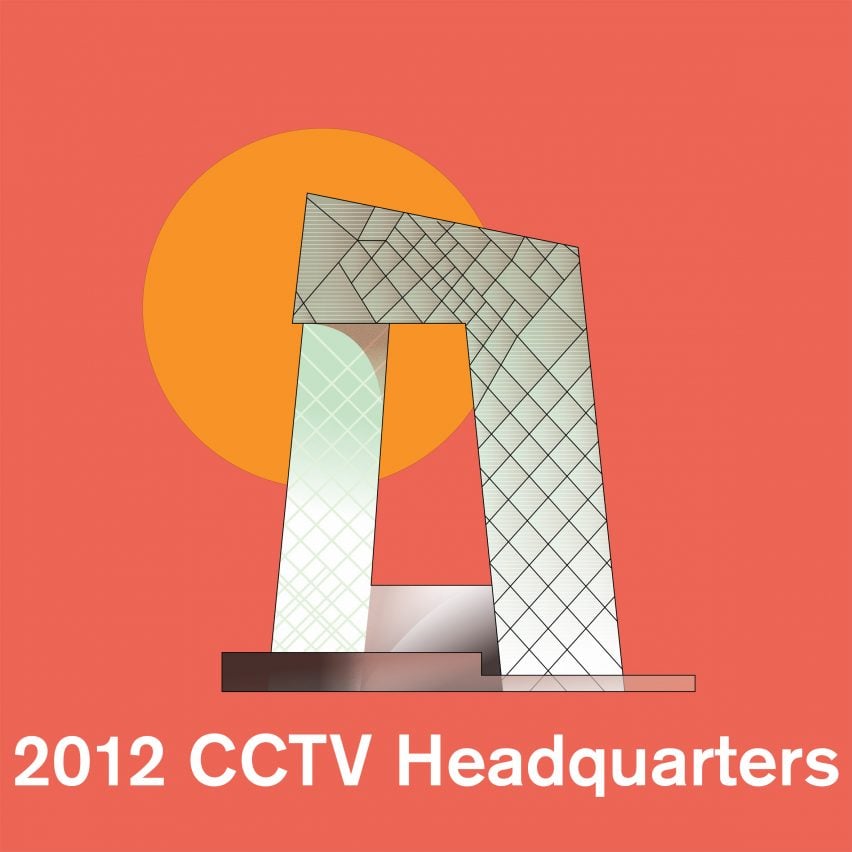
This article is part of Dezeen’s 21st-Century Architecture: 25 Years 25 Buildings series, which looks at the most significant architecture of the 21st century so far. For the series, we have selected the most influential building from each of the first 25 years of the century.
The illustration is by Jack Bedford and the photography is by Philippe Ruault.
21st-Century Architecture: 25 Years 25 Buildings
2000: Tate Modern by Herzog & de Meuron
2001: Gando Primary School by Diébédo Francis Kéré
2002: Bergisel Ski Jump by Zaha Hadid
2003: Walt Disney Concert Hall by Frank Gehry
2004: Quinta Monroy by Elemental
2005: Moriyama House by Ryue Nishizawa
2006: Madrid-Barajas airport by RSHP and Estudio Lamela
2007: Oslo Opera House by Snøhetta
2008: Museum of Islamic Art by I M Pei
2009: Murray Grove by Waugh Thistleton Architects
2010: Burj Khalifa by SOM
2011: National September 11 Memorial by Handel Architects
2012: CCTV Headquarters by OMA
This list will be updated as the series progresses.

